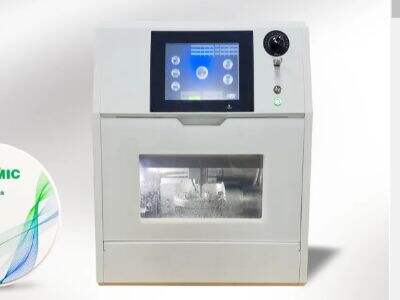The dental impression material, also known as alginate, which is used for making a mold of your teeth. You may remember how uncomfortable and messy it can be! But guess what? That is the pretty latest and way cooler way to do a model of your teeth! This is what is known as an intraoral scanner. An Incredible machine that takes pictures of your teeth, in order to make a digital mould. Well, let us dig deeper into the world of Intraoral Scanners and also share how it functions. Dynamic is here to help.

What Are Intraoral Scanners?
They are special tools our dentists use to take crisp pictures of your teeth and mouth. These images form a model of three dimension of your teeth making a digital replica of the way your teeth looks. This is the model dentists use to fabricate expensive dental work, such as crown / bridge if you need it. Intraoral Scanner are a new technology and now take the place of the traditional method to make dental impressions better. That method is now ancient, archaic and kind of dirty — certainly no fun for most people involved.
Why Use Intraoral Scanners?
There are several good reasons to opt for an intraoral scanner and Milling Machine over traditional means. Perhaps most importantly, it is friendlier for patients. So you only need to open your mouth for the scanner as opposed an even more unpleasant experience dealing with holding a mouthful of goop. It feels a lot easier! Not to mention, it is a lot faster than normal impressions. This means you will have to spend less time sitting in the dentist's office, which is always a good thing.
Intraoral scanners are also useful for creating more precise models of your teeth as well. Ive seen errors in the debug/regular impressions sometimes. Such slip-ups might even make your dental works not so well settled in your mouth, bringing about a lot of inconvenience. Intraoral scanners enable better-fitting and longer-lasting models, which can go a long way to give you confidence in your dental work.
Intraoral scanners are Lastly More Eco-Friendly Traditional Impressions – These take a lot of material to create and create considerable waste. In contrast, intraoral scanners consume far less material and the digital models they create can be utilized multiple times. Thats Good thing for our earth forest!
What Is an Intraoral Scanner and How Does It Work?
Intra oral Scanners — An intraoral scanner and Intraoral Cameras basically has functional responsibility to image your tooth (Acquires visual images of your teeth using a wand-like device) There is a tiny camera at the end of the wand, easily able to take photos of every surface of your teeth. These images are then transmitted via the impressions data to a computer which generates a 3D model of the individual tooth and an informative visual. It's like magic!
The wand is compact so the dentist can move it most places in your mouth and snap pictures. All of that process usually takes no more than 10 minutes which is a considerable improvement in the traditional methods. And the best aspect of it all is that not only are the images available instantly, unlike traditional film where prints have to be sent off for processing and can take an age.
How Is the Scanning Done?
That easy and straightforward process endured with intraoral scanners. Before any whitening begins, the dentist will examine you to make sure there are no other dental repairs needed. If so, they will then take images of your teeth using the intraoral scanner in order to make a 3D model. This is because a custom crown, fillings, bridge or any other type of dental work will be made out of that model.
Once the digital model has been created, it can be digitally manipulated using high tech computer design software so that it fits perfectly. After that design, the machine is sent a mill and it goes off to make the particular dental work from a block of material. From here, the only step remaining will be to have the dentist fit that dental work onto your tooth as needed so you can use it without any issues ahead.
Advantages of Intraoral Scanners
Intraoral scanners have a lot of advantages over traditional impressions. They are more comfortable for the patient than traditional impressions, and they create better tooth models. This makes for the better fitting and more effective dental work. However, the benefits of intraoral scanners do not even stop there as they are also eco-friendly by using less material and waste.
Intra-oral scanning technology provides an excellent solution for saving both time and money on the part of dentists in addition to patients. It is quicker and more efficient to see a product, and the digital models can be maintained for future re-use. This means that patients won't need to be given numerous impressions for various dental procedures, and dentists will not have to create new models every time they need something.

 EN
EN
 AR
AR NL
NL FR
FR DE
DE EL
EL HI
HI IT
IT PL
PL PT
PT RO
RO RU
RU ES
ES IW
IW ID
ID VI
VI TH
TH TR
TR FA
FA
